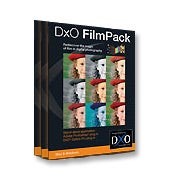Recreate the look of film with DxO's latest offering.....
DxO FilmPack 1.1
Photography has always had a sense of nostalgia about it, with photographers keen to explore and recreate the look of the past.
With FilmPack 1.1, DxO has taken this idea a step further, offering digital imagers the opportunity to give their files the look and feel of specific film stocks – black and white as well as colour. More than 20 film types are represented, including both reversal and negative, from longstanding emulsions such as Kodak’s Tri-X and Kodachrome to more modern films such as Fujifilm’s Velvia and Astia.
Using FilmPack’s self-explanatory drop-down list and slider interface, you choose an emulsion and the software applies both the colour and grain of the film to your digital image, with the on-screen preview showing you the result. However, you are not restricted to using the colour and grain as a pair, because you can ‘mix and match’ the two – so you can have the colour of Kodachrome 25 with the grain of ISO 3200 T-Max. In addition, you can adjust the intensity of the grain, either manually or using a preset to give a 35mm, medium format or large format (5×4) film texture to your image.
Add two cross-processed ‘looks’ (C41 film through E6 chemistry and vice versa), six toning effects (including gold, selenium and ferric sulfate) and contrast and saturation controls, and there’s plenty of opportunity to create your own unique effects. With the simple control panel, using the FilmPack software is incredibly straightforward but it’s a shame that there’s no option to save your favourite combinations – it’s a case of writing the settings down and making your own ‘recipe book’.
In terms of using the film effects ‘straight’ we’re very impressed because unlike most image-editing filters this isn’t a random collection of approximations or ‘looks’. Instead, DxO has processed and scanned the individual film stocks and then extracted the actual characteristics in terms of colour and grain to give the closest possible match to the original material.
Currently there are three versions of FilmPack available – one that’s built into DxO Optics Pro, a Photoshop CS2/Elements 4 and 5 plug-in and a standalone application. All work on both Mac and Windows PCs, although you need the full version of DxO Optics Pro to benefit from Raw file compatibility – the plug-in and standalone versions only work with JPEG/TIFF files.n
Verdict
If you still shoot film on occasion, you can?t help but appreciate the unique look of individual emulsions, and now DxO is lets you exploit that in imaging with FilmPack 1.1. The list of emulsions isn?t exhaustive but the results are fantastic and the ability to customise them is something film users could never do.
Verdict
If you still shoot film on occasion, you can’t help but appreciate the unique look of individual emulsions, and now DxO is lets you exploit that in imaging with FilmPack 1.1. The list of emulsions isn’t exhaustive but the results are fantastic and the ability to customise them is something film users could never do.





